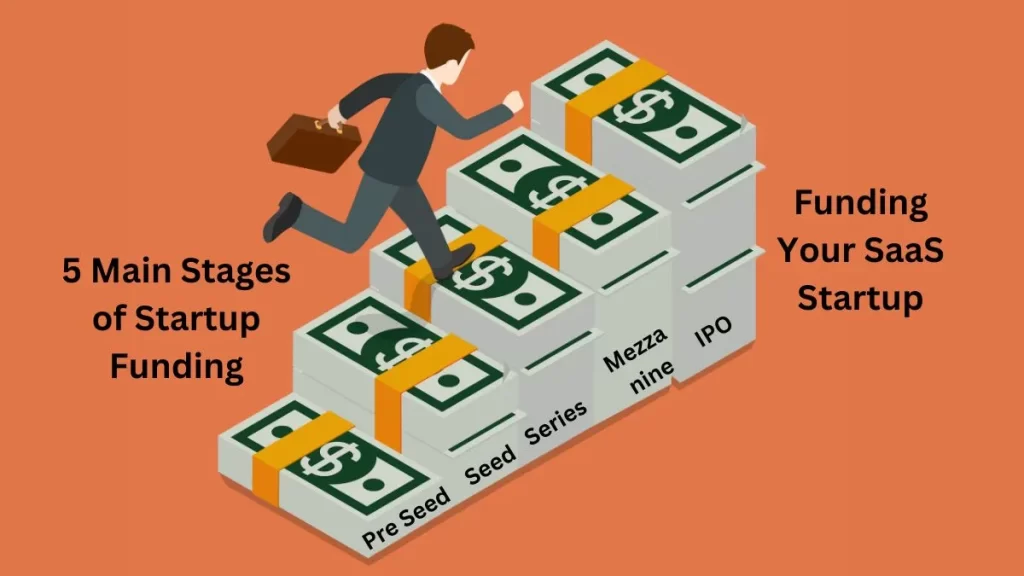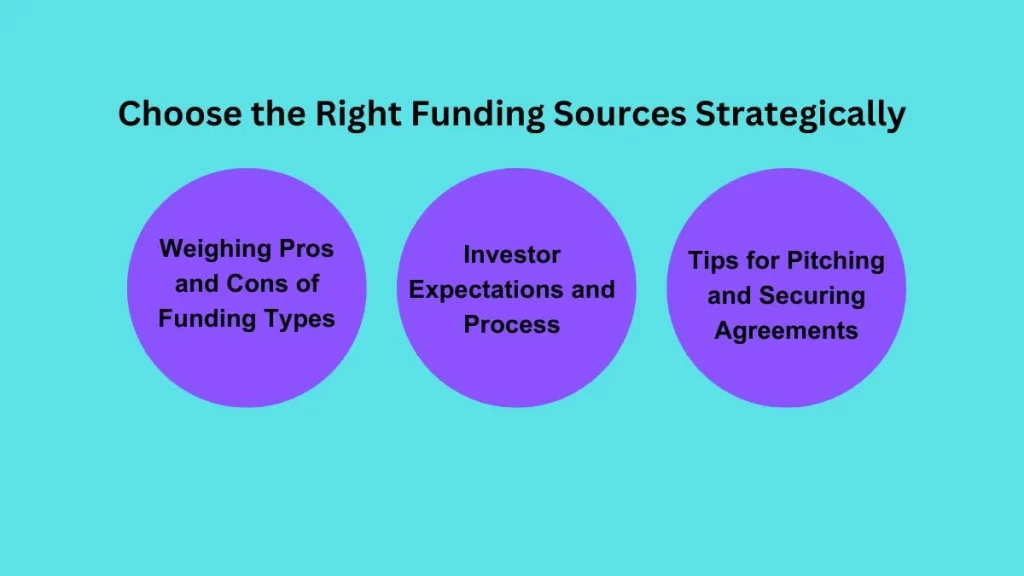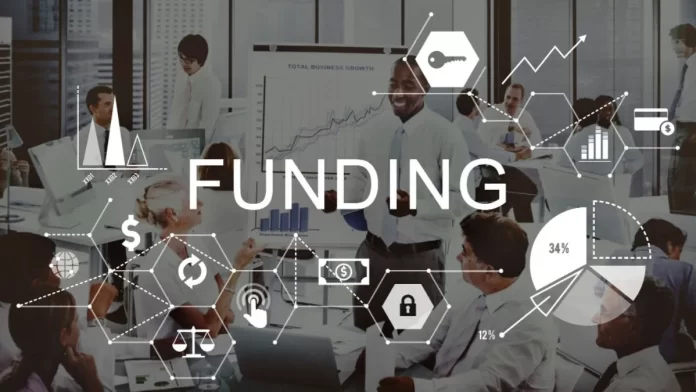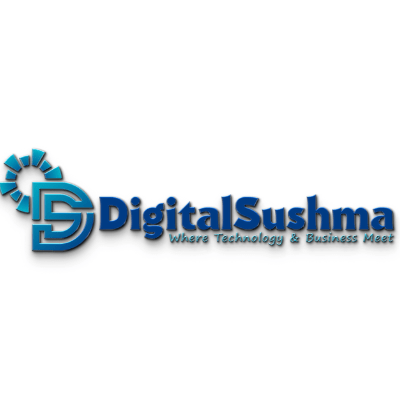Securing ongoing funding is an indispensable part of scaling a SaaS startup from an early-stage concept into a high-growth business. But with so many funding options to weigh and metrics that investors want to see, the financing process can seem daunting for first-time founders.
This comprehensive guide aims to demystify Funding of SaaS Startup from top to bottom. We’ll cover everything from assessing when you’re ready to seek investments, to the five primary stages of startup financing, to choosing the right investors and financial instruments strategically. You’ll also learn key benchmarks that investors look for and how to position your company to exceed expectations.
Follow our structured playbook for Funding of SaaS Startup and you’ll be well equipped to finance each phase of growth on your journey from founding to eventual liquidity.
Funding of SaaS Startup: Knowing When It’s Time to Seek Funding
Seeking startup funding too early or too late can both cause major issues. Here is guidance on aligning your financing efforts with your startup’s stage of growth:
Assessing Business Growth and Funding Needs
The ideal time to raise each round aligns with clear inflection points in your growth. Analyze leading indicators like month-over-month customer acquisition, revenue growth, product-market fit validation, and progress toward scaling up key business functions.
Use this momentum tracking to determine when your existing funds are insufficient for supporting your startup’s goals over the next 6-12 months. That’s when it makes sense to seek new Funding of SaaS Startup.
Dangers of Seeking Funding Too Early or Too Late
Premature large funding rounds saddle startups with investor expectations they can’t yet deliver on. This creates unnecessary pressure and distracts focus from validated growth channels.
On the flip side, delaying necessary financing because you want to retain control can starve your startup’s growth. Competitors who do raise substantial funding of SaaS Startup can leverage those resources to outpace you.
Carefully determining when your startup has truly outgrown its existing capital sources is crucial. Now let’s explore the main stages of financing from the beginning.
Also Read: The Ultimate Guide to SaaS Marketing Automation Tools: 21 Essential Tools
Overview of the 5 Main Stages of Startup Funding
SaaS startups should anticipate needing funding over five primary stages:
Pre-Seed Funding
Used to establish proof-of-concept and develop minimum viable product.
Seed Funding
Validates market potential and scales initial audience and revenue.
Series A Through Series E Funding
Progressively larger rounds to rapidly expand business.
Mezzanine Financing
Provides bridge funding in anticipation of final liquidity event.
Initial Public Offering (IPO)
Public listing provides shareholder returns and ongoing access to public markets.
We’ll now break down each step in further detail, including optimal sources and uses of capital during each funding stage.

Pre-Seed Funding Stage
Pre-seed funding powers a SaaS startup’s earliest steps and typically funds:
Purpose and Typical Use of Funds
- Building an MVP
- Founding team salary
- Legal incorporation
This pre-launch capital lets founders quit their day jobs and focus full time on the startup for 12-18 months without drawing any salary. Minimum first round size is usually around $50,000 to $150,000.
Bootstrapping vs External Financing Options
Many founders begin by bootstrapping. Sources include:
- Personal savings
- Credit card debt
- Friends/family backing
External options later on include pre-seed VC funds and angel investors. Angels may fund close connections for as little at $25,000 at this stage.
Angel Investors
This early, small seed capital offers little equity in return. But angles gain experience vetting and advising emerging startups. Typical investment terms last 5+ years before exits are expected.
VC funds participate selectively in earlier rounds to get in front of promising startups before competition emerges.
With conservative capital secured, founders can now dedicate themselves fully to executing on the startup idea and vision.
Also Read: The Complete Guide to Guest Posting for SaaS Business Growth
The Critical Seed Funding Stage
Upon developing an MVP, startups pursue formal seed funding seeking:
Average Investment Amounts
Seed rounds average $1 to $3 million but can reach up to $6 million. Ownership sold stays under 20%. High valuations set future rounds higher. Establishing traction is vital first.
Equity Financing and Working With VCs
Venture capital firms back most seed rounds once traction materializes. Research firms targeting your niche industry and business model relevant generalists like Y Combinator.
Typical startup metrics that attract seed investors:
- 5,000+ email signups
- $25k+ in monthly recurring revenue
- 7-15% month-over-month growth
Securing Follow-On Funding
In your pitch deck, present a model for future profitability. Outline your Series A funding of SaaS Startup needs for rapidly expanding the business. This level of forward thinking reassures VCs that management envisions much bigger outcomes.
Now we dive deeper into Series A and how to chart a course through later funding.
Also Read: SaaS Marketing Guide: Differences, Effective Strategies, and Best Practices for Software Companies
Series A Through Series E Funding Explained
SaaS startups use Series A through Series E funding rounds to finance escalating stages of dramatic expansion. Key details on navigating each round:
Overview of Each Funding Round
Series A Raises $5M to $15M+ for scaling user base quickly.
Series B Secures $10M to $30M for new markets and bigger teams.
Series C Brings $50M+ for large acquisitions and leverage advantage.
Series D+ Limited rounds for special cases like turnarounds or critical mergers.
Typical Business Trajectory and Milestones
Each funding round maps to typical startup growth milestones:
A – 1M+ users, $15M+ revenue B – 10M+ users, $50M+ revenue
C – 100M+ users, $150M+ revenue
Series C company valuations often exceed $500M. Profitability typically achieved by Series D and beyond.
Sources of Later Stage Financing
In addition to VC investors, Series C & D rounds attract private equity firms, hedge funds, investment banks, and corporate investors seeking eventual M&A and software vertical integration.
Also Read: The Complete Guide to SaaS Inbound Marketing: How to Drive Leads and Sales
Preparing for an IPO Through Mezzanine Financing
Before finally launching an IPO, bridge financing fills short-term budget gaps and funds essential growth needs en route to public markets.
Bridge Loans and Mezzanine Financing Options
Convertible debt notes allow investors to convert temporary higher interest loans into equity at IPO time at better valuations than current suppressed rounds. Companies retain flexibility to reward those who funded their end stages.
Business Readiness for Public Trading
Financial advisors gauge IPO preparedness based on trillion-dollar disruption potential, profitability, scalable operations, and recession resistance. They then chart a timeline for regulatory compliance and book-building.
Also Read: How to Choose the Best SaaS Marketing Agency for Your Business Growth
Choose the Right Funding Sources Strategically
Each funding type and structure impacts ownership control, freedom of action, and pressure in different ways. Navigating tradeoffs thoughtfully is key.
Weighing Pros and Cons of Funding Types
Bootstrapping preserves control but restricts pace of growth. Debt must be repaid but not equity sold. Equity financing funds rapid expansion yet requires investor oversight. There are many good options—no one size fits all.
Investor Expectations and Process
Angel investors offer relatively founder-friendly terms but still impose growth expectations. VCs mandate board seats and intense reporting in exchange for capital to dominate markets quickly.
Make sure your vision aligns with investors’ exit timelines and ROIs as you evaluate term sheets. Retain trusted advisors to stress test agreements.
Tips for Pitching and Securing Agreements
Craft meticulous financial models mapping future fundraising needs, growth milestones, and exit potential. Detail your total addressable market backed by independent research. Small optimizations significantly boost odds of closing rounds.

Tracking Metrics and Benchmarks for Investors
In the effort to secure ongoing investor confidence and follow-on financing, SaaS leaders must maintain firm grasp of key performance indicators including:
Churn Rate and MRR Growth
Predictable recurring revenue growth and retention of existing customers indicates ability to survive shifting market landscapes and downturns.
ARPU
High average revenue per user demonstrates effectiveness of pricing plans and upsell packages at extracting maximum customer value.
CAC
Cost to acquire a customer must perpetually fall below lifetime customer profit contribution at sustainable volumes. Otherwise unprofitable growth ensues.
Capital Efficiency
Bootstrapped startups aim for under $1 million raised per $1 million in ARR. Capital intensive machine learning ventures often require $5 million+ of equity backing per $1 million in revenue. As the startup matures, capital efficiency should improve each new cycle.
Also Read: The Essential SaaS Marketing Playbook: 12 Proven Strategies
Conclusion
This full guide to securing ongoing funding of SaaS startup demystifies the staged process top companies embrace to finance product launch, validation, hypergrowth, and eventual public listing or acquisition. We explored optimal sources and uses for capital during every phase. Just don’t lose sight of what matters most—serving customers.
Let equity financing power bold ambitions, but avoid unrealistic expectations divorced from actual buyer traction. And remember frugality enables creative solutions while building sustainable operations. With patient financial planning and commitment to buyers, product visions turn into truly transformative and world-changing companies.






